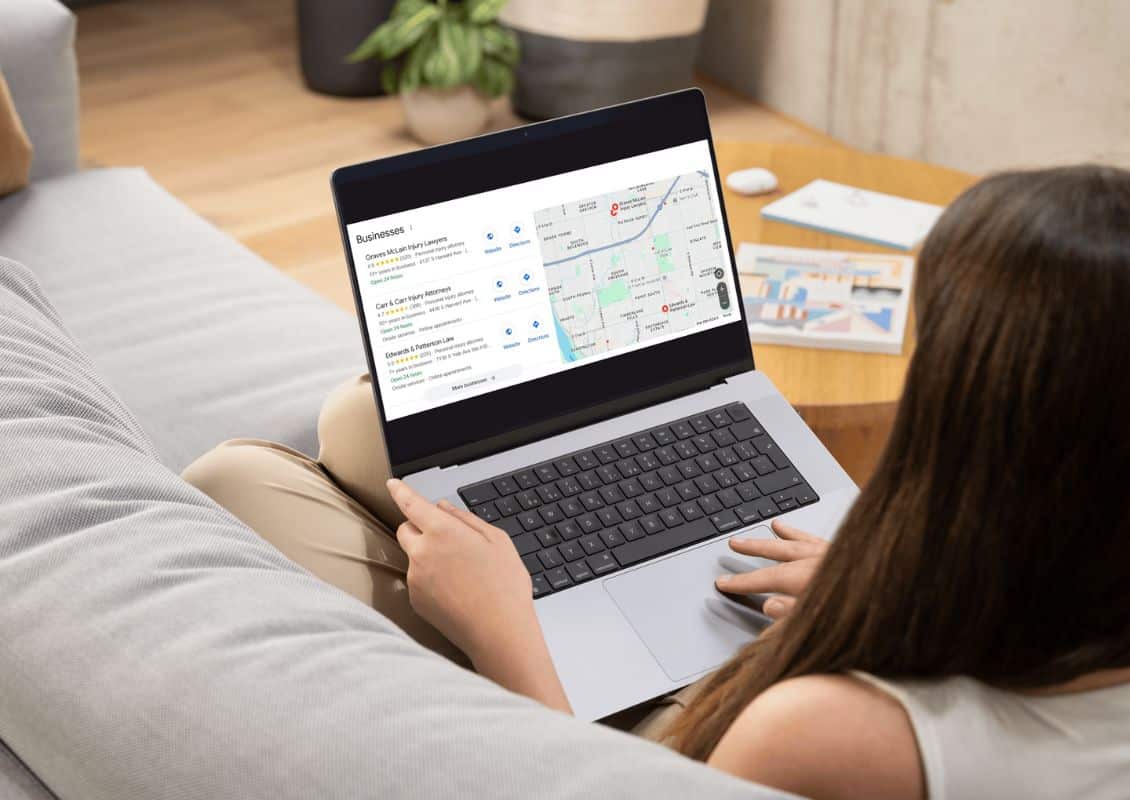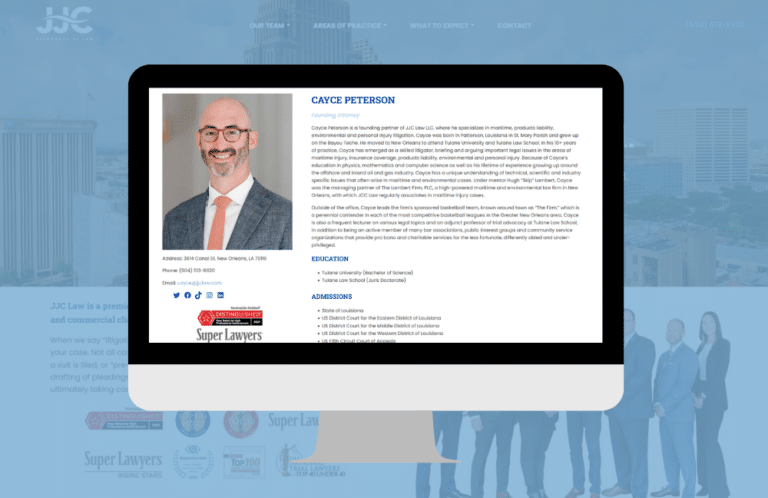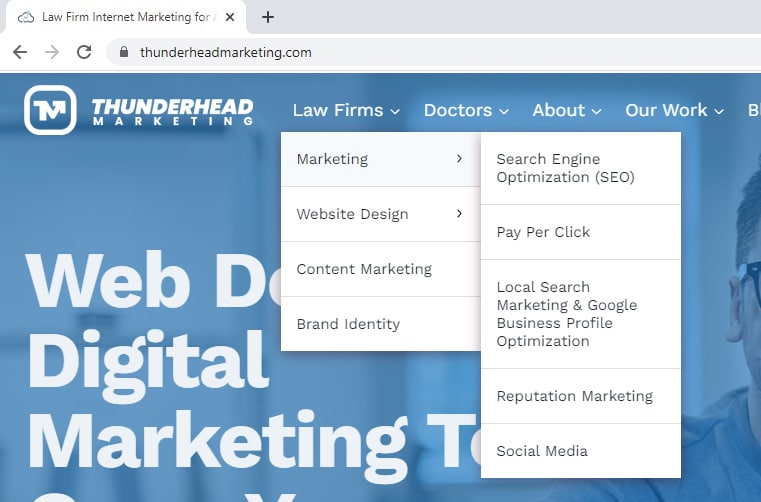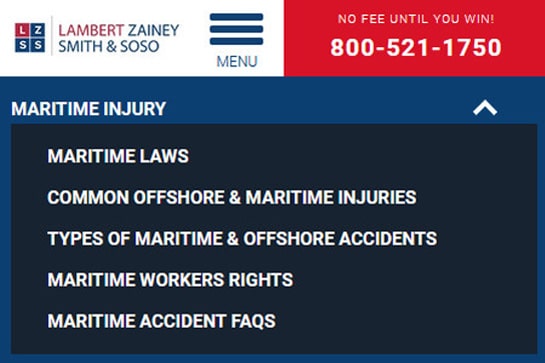Think about the last time you needed to find a service in your area — whether it was a lawyer, doctor, or even a plumber. Chances are, you didn’t flip through the Yellow Pages. Instead, you pulled out your phone, opened Google, and typed something like “family lawyer near me” or “personal injury attorney in [City Name].” In just a few seconds, Google gave you a list of options right at your fingertips.
For law firms, being on that list is critical. Your potential clients are turning to local search to find the services they need. And the good news? You can control how your business shows up by optimizing your Google Business Profile (GBP).
This isn’t just another task on your marketing to-do list — it’s one of the most powerful tools you have to stand out in your community. If you’ve ever wondered how to get your practice in front of more local clients, boost your credibility, and improve your visibility, you’re in the right place. In this guide, we’ll walk you through the ins and outs of Google Business Profile and how it can transform your local SEO strategy to attract more clients.
What Is Local SEO?
At its core, local SEO is all about making sure your business appears when people in your area perform a web search for the services you provide. If you’re an attorney, local clients are your bread and butter. Whether they’re searching for a “divorce lawyer” or a “probate attorney,” your goal is to be at the top of their list.
Google Business Profile (GBP) is one of the most effective tools to help you do just that. It’s a free service from Google that lets you control how your practice shows up in Google Search and Maps. The more optimized your profile is, the more likely local clients are to find you. So, let’s dive into how you can make your GBP work for you.
Setting Up and Optimizing Your Google Business Profile
Getting your Google Business Profile (GBP) right isn’t just about filling in a few details and calling it a day. A well-optimized profile is your ticket to higher visibility, increased credibility, and ultimately, more clients walking through your door. Let’s break down the process step by step.
Claiming and Verifying Your Business
Before anything else, you need to claim your business on Google. If your law firm hasn’t been claimed yet, head over to Google Business Profile and search for your business. Google will give you the option to claim it, and from there, you’ll need to go through a verification process.
Verification isn’t just for show. Google wants to ensure that you’re a legitimate business, and verifying your profile helps build trust with both Google’s algorithms and potential clients. The verification process usually involves Google sending a postcard to your business address with a unique code that you’ll input online. Once you’ve completed that step, you’re officially verified, which is a crucial factor in improving your search ranking.
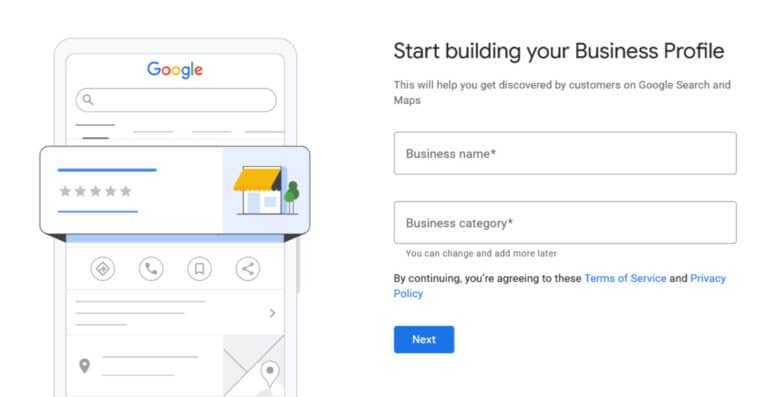
Completing Your Business Information
Here’s where you really get to shape how your business appears online. Start by filling out all the essential information:
- Business Name: Use your accurate legal business name, i.e. Smith Law Group.
- Address: Make sure this is consistent with the address on your website and other online directories. Any discrepancies can confuse Google and hurt your local SEO.
- Phone Number: It’s best to use a local phone number rather than a toll-free one. Local numbers give Google a stronger indication that you’re a legitimate local business.
- Website: Link directly to your website. If you have more than one website, link to the one with the highest authority that is most directly related to your business.
- Hours of Operation: Be precise. This is often the first thing clients check, especially when they’re ready to make a call or visit in person. Make sure you update these hours during holidays or special occasions, as this will improve your chances of appearing in searches for businesses that are open at specific times.
- Business Categories: Choose the most relevant category for your business. For law firms, you can select categories like “Family Law Attorney,” “Personal Injury Lawyer,” or “Criminal Justice Attorney,” depending on your specialization. Don’t stop at just one; you can add secondary categories that reflect other services you offer.
Adding Services and Attributes
Now that your basic info is covered, it’s time to dive into the specifics of what you offer. Google allows you to add services and attributes to your profile, which gives potential clients a clearer idea of what you provide. List specific services like “Divorce Law,” “Estate Planning,” or “Immigration Law.”
Attributes are another important feature to leverage. Attributes give you the ability to provide extra details that might appeal to potential clients, like “Wheelchair accessible,” “Free Wi-Fi,” or “Appointment required.” These small touches can make a big difference, especially when clients are comparing multiple options.
Business Description: Writing for Impact
Your business description is prime real estate for showcasing what makes your firm or practice unique. You have 750 characters to sell your business to potential clients, so make them count. Here are a few tips for writing a compelling business description:
- Start with a strong opener: Capture attention with a clear statement of what you do and where you operate. Example: “Smith & Associates is a leading family law firm based in downtown Chicago, specializing in divorce, child custody, and estate planning.”
- Highlight key services: Briefly mention your primary areas of expertise and any standout features, like free consultations, flexible scheduling, or notable cases (if applicable).
- Use geo-targeted keywords: Incorporate location-specific keywords naturally into your description. Phrases like “serving clients throughout Orange County” or “trusted business law firm in Brooklyn” help Google associate your business with local searches.
- End with a call to action: Don’t just describe your business — invite potential clients to take the next step. Something like “Contact us today for a free consultation” gives readers a clear direction.
Choosing Your Profile Picture and Photos
When potential clients find your profile, they’ll see more than just your business info — they’ll also see images that represent your practice. A picture can speak volumes, so take time to select high-quality photos that show off your office, your team, and the services you offer.
- Profile Picture: Choose an image that represents your brand. For law firms, this could be a professional shot of your team.
- Interior/Exterior Shots: Give clients a peek inside your office with well-lit, clean images of your workspace. If you have a particularly inviting waiting room or state-of-the-art equipment, show it off.
- Team Photos: Personal connections matter, especially in law and healthcare. Include professional but friendly shots of your team — lawyers, paralegals, receptionists, everyone. This helps humanize your business.
- Service Images: If applicable, include photos that show you in action — whether it’s a consultation or meeting with a client. These kinds of images can reassure potential clients that they’ll receive professional, personalized care.
Be sure to keep your visual content up-to-date. Regularly uploading fresh photos not only keeps your profile looking active but also signals to Google that your business is engaged and worth ranking higher in search results.
Setting Up Messaging and Appointment Links
One often-overlooked feature of GBP is the ability to enable messaging. By turning on this feature, potential clients can contact you directly from your GBP profile. It’s a quick, easy way to engage with people who may have questions before making a decision.
Additionally, if you allow clients to schedule appointments online, you can add a booking link directly to your profile. This makes it even easier for someone to go from searching for your business to scheduling a consultation, all in one smooth process.
Using GBP Features to Boost Your Local SEO
Leveraging Keywords
Keywords are like little signposts that guide potential clients to your business. You’ll want to sprinkle geo-targeted keywords throughout your business description and services. If you’re a law firm in Los Angeles, think phrases like “Los Angeles criminal lawyer” or “divorce attorney in LA.” Keep it natural, though — don’t overdo it. Google is smart, and stuffing your profile with keywords can actually hurt you.
Managing Reviews and Reputation
Let’s talk about reviews. We all check them before choosing a restaurant, buying a product, or — yep — hiring a lawyer. Google knows this, and reviews play a significant role in your local search ranking. Good law firm reputation management should include encouraging your happy clients to leave a review, and when they do, taking the time to respond. A simple “thank you” shows appreciation, while responding to negative feedback professionally can turn a bad situation into an opportunity to show your commitment to customer service.
Engaging with Q&A
People have questions, and Google lets them ask those questions directly on your GBP. Make sure you’re actively engaging with this feature. Answer questions as they come in, and better yet — be proactive. Add Frequently Asked Questions (FAQs) yourself to anticipate what potential clients might want to know. This not only saves time but also positions you as a trusted resource.
Maximizing Visual Impact
We all know the saying, “A picture is worth a thousand words,” but in the digital age, it might be worth even more. We mentioned the importance of including high-quality images in your profile, but don’t forget about videos! Short, engaging videos can make a huge impact. Think client testimonials, tours of your office, or clips of your team in action. Keep your videos short and sweet, and be sure to use relevant keywords in the video titles and descriptions.
Enhancing Engagement Through Google Posts
One of the coolest features on GBP is Google Posts. Think of them like mini-ads or updates that show up when someone searches for your business. Use them to announce promotions, share news, or highlight an upcoming event.
For example, if you’re a law firm offering free consultations, write a post with a catchy headline like, “Need Legal Advice? Get a Free Consultation This Month.” Include a call to action and make it easy for potential clients to take the next step. And just like with any marketing effort, consistency is key. Keep your profile fresh by updating it regularly with new posts.
Monitoring and Analyzing Performance
Want to know how your profile is performing? Google Business Profile Insights provides key metrics that show you how potential clients are finding and interacting with your business. You’ll see stats like how many people viewed your profile, clicked for directions, or called you directly. These insights are gold when it comes to tweaking your strategy — if you notice that certain posts or keywords are driving more traffic, double down on those efforts.
Ongoing Optimization
Don’t think of GBP as a “set it and forget it” tool. Like any good marketing strategy, it requires regular attention. Update your profile with new information, add fresh photos, and monitor your reviews. Google rewards businesses that are active, so the more you engage, the better your local SEO will be.
Take Control of Your Local Presence — Start Optimizing Your Google Business Profile Today
Your Google Business Profile can be the difference between being found by local clients or getting lost in the crowd. By fully optimizing your profile and staying active, you’ll boost your visibility, build trust, and attract more clients to your law firm.Don’t wait — start optimizing your profile today and take control of your local SEO. Need expert guidance? Thunderhead Marketing specializes in helping law firms like yours grow through strategic local SEO. Contact us now to get started!

